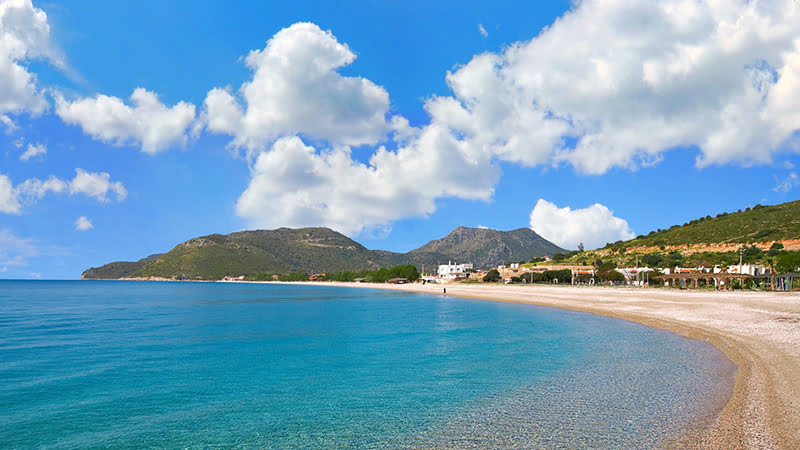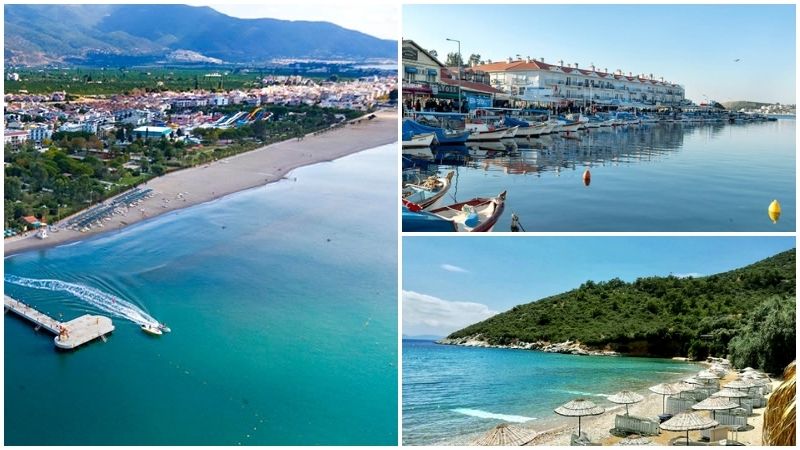Mount Nemrut - Shadows of the Gods on the Peak of the Ancient World

Mount Nemrut is a mountain located in the Kahta district of Adiyaman province in southeastern Turkiye and is considered one of the most impressive archaeological sites of the ancient world. This mountain, which contains the magnificent ruins of the Commagene Kingdom, is also on the UNESCO World Heritage List and hosts thousands of visitors every year.
Let's examine the history, archaeological findings, religious and cultural importance and current status of Mount Nemrut in detail.
Mount Nemrut was built as a sacred site by Antiochus I, the ruler of the Commagene Kingdom, in the 1st century BC. As a ruler who considered himself equal to the gods, Antiochus built a magnificent monumental tomb complex for both himself and the gods. This complex stands out as a work that reflects Antiochus' desire to achieve immortality and the cultural and religious richness of the Commagene Kingdom.
The Kingdom of Commagene was located at the intersection of Eastern and Western cultures and was a synthesis of these two cultures. The monuments and statues on Mount Nemrut reflect a mixture of Hellenistic, Persian and local Anatolian cultures.
The monumental tomb complex, located at an altitude of 2,150 meters on the summit of Mount Nemrut, is surrounded by large stone statues, reliefs and inscriptions. Among these statues are giant statues of various gods as well as Antiochus. The statues of the gods include Zeus, Apollo, Heracles and the goddess of Commagene. Each of these statues, which are 8-10 meters high, were found with their heads separated from their bodies over time, and today the heads are exhibited separately on the summit of the mountain.
The monumental tomb complex consists of three main sections: the eastern, western and northern terraces. The giant statues and altar area on the eastern terrace are an ideal spot to watch the sunrise. The western terrace was used to watch the sunset and there are also statues and reliefs here. The north terrace served as a transition area connecting the east and west terraces.
Nemrut Mountain has great importance in both religious and cultural terms. Reflecting Antiochus's desire to achieve immortality and seeing himself as equal to the gods, this monumental tomb symbolizes the religious and cultural richness of the Kingdom of Commagene. The statues of the gods and reliefs reflect the fusion of Eastern and Western cultures, and this synthesis reveals the unique character of the Kingdom of Commagene.
The inscriptions on Mount Nemrut explain the religious beliefs of the Kingdom of Commagene and Antiochus' relationship with the gods. These inscriptions also contain messages that Antiochus left to his people and future generations. These messages reflect the ruler's belief in immortality and his efforts to unite his people around this belief.
Nemrut Mountain Today is one of the most important tourist attractions in Turkiye. This ancient site, which is on the UNESCO World Heritage List, is visited by thousands of local and foreign tourists every year. The sunrise and sunset watched from the summit of Mount Nemrut provide unforgettable moments for visitors.
Various projects are being carried out and archaeological excavations continue for the protection and promotion of Mount Nemrut. These studies are being carried out meticulously in order to preserve the structural integrity of the monumental tomb complex and to transfer its historical values to future generations.
Mount Nemrut is a unique archaeological site located at the summit of the ancient world and reveals the religious and cultural heritage of the Kingdom of Commagene. The monumental tomb complex, which reflects Antiochus' desire for immortality and his relationship with the gods, is adorned with unique sculptures and reliefs reflecting the synthesis of Eastern and Western cultures. Today, Mount Nemrut offers its visitors a fascinating experience with its historical and cultural riches and carries the traces of the past to the future. This unique mountain will continue to influence and inspire people in the future, as it has throughout history.
Let's examine the history, archaeological findings, religious and cultural importance and current status of Mount Nemrut in detail.
History of Mount Nemrut
Mount Nemrut was built as a sacred site by Antiochus I, the ruler of the Commagene Kingdom, in the 1st century BC. As a ruler who considered himself equal to the gods, Antiochus built a magnificent monumental tomb complex for both himself and the gods. This complex stands out as a work that reflects Antiochus' desire to achieve immortality and the cultural and religious richness of the Commagene Kingdom.
The Kingdom of Commagene was located at the intersection of Eastern and Western cultures and was a synthesis of these two cultures. The monuments and statues on Mount Nemrut reflect a mixture of Hellenistic, Persian and local Anatolian cultures.
Archaeological Findings
The monumental tomb complex, located at an altitude of 2,150 meters on the summit of Mount Nemrut, is surrounded by large stone statues, reliefs and inscriptions. Among these statues are giant statues of various gods as well as Antiochus. The statues of the gods include Zeus, Apollo, Heracles and the goddess of Commagene. Each of these statues, which are 8-10 meters high, were found with their heads separated from their bodies over time, and today the heads are exhibited separately on the summit of the mountain.
The monumental tomb complex consists of three main sections: the eastern, western and northern terraces. The giant statues and altar area on the eastern terrace are an ideal spot to watch the sunrise. The western terrace was used to watch the sunset and there are also statues and reliefs here. The north terrace served as a transition area connecting the east and west terraces.
Religious and Cultural Importance
Nemrut Mountain has great importance in both religious and cultural terms. Reflecting Antiochus's desire to achieve immortality and seeing himself as equal to the gods, this monumental tomb symbolizes the religious and cultural richness of the Kingdom of Commagene. The statues of the gods and reliefs reflect the fusion of Eastern and Western cultures, and this synthesis reveals the unique character of the Kingdom of Commagene.
The inscriptions on Mount Nemrut explain the religious beliefs of the Kingdom of Commagene and Antiochus' relationship with the gods. These inscriptions also contain messages that Antiochus left to his people and future generations. These messages reflect the ruler's belief in immortality and his efforts to unite his people around this belief.
Nemrut Mountain Today
Nemrut Mountain Today is one of the most important tourist attractions in Turkiye. This ancient site, which is on the UNESCO World Heritage List, is visited by thousands of local and foreign tourists every year. The sunrise and sunset watched from the summit of Mount Nemrut provide unforgettable moments for visitors.
Various projects are being carried out and archaeological excavations continue for the protection and promotion of Mount Nemrut. These studies are being carried out meticulously in order to preserve the structural integrity of the monumental tomb complex and to transfer its historical values to future generations.
Mount Nemrut is a unique archaeological site located at the summit of the ancient world and reveals the religious and cultural heritage of the Kingdom of Commagene. The monumental tomb complex, which reflects Antiochus' desire for immortality and his relationship with the gods, is adorned with unique sculptures and reliefs reflecting the synthesis of Eastern and Western cultures. Today, Mount Nemrut offers its visitors a fascinating experience with its historical and cultural riches and carries the traces of the past to the future. This unique mountain will continue to influence and inspire people in the future, as it has throughout history.























































































